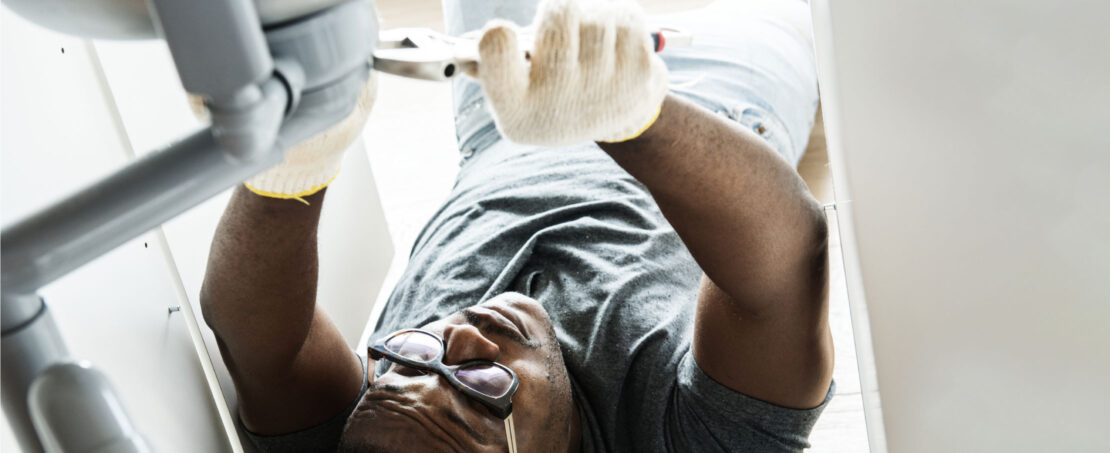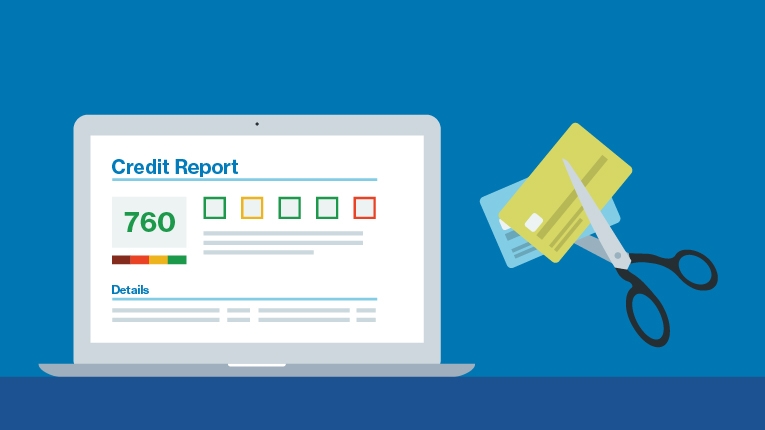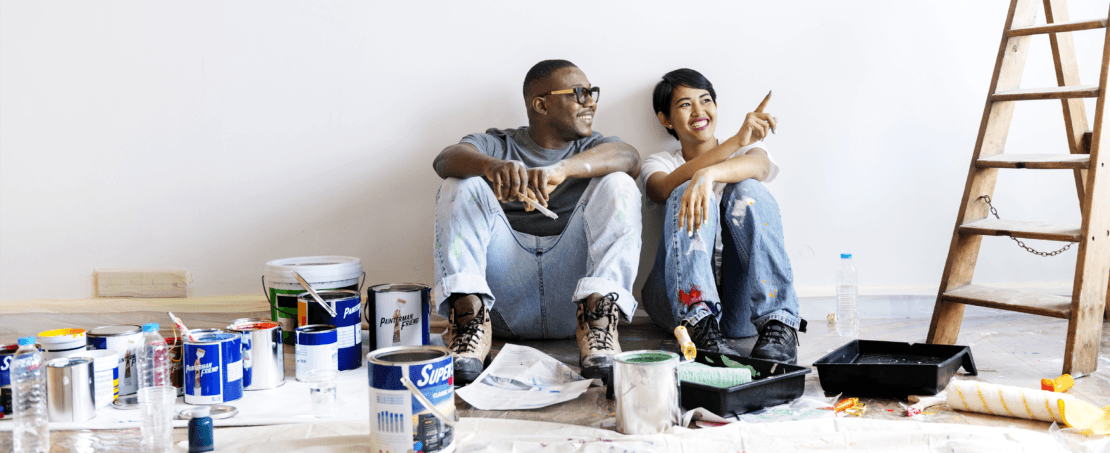What Are the Average Costs of Common Home Repairs?

No matter how long you’ve lived in your home, there's no escaping the occasional repair or improvement project. From small problems you can fix yourself to major concerns requiring the help of a pro, it takes valuable time and money to keep your house in tip-top shape.
Home repair costs have increased recently due to labor and material shortages and inflation. So, it's critical to research and compare costs. Knowing upfront what you can expect to pay for certain types of repairs and improvements can help you prepare financially and save you a lot of stress.
Average Costs of Common Home Repairs
Average home repair costs vary depending on the severity of the issue, where you live, who you hire, and the current cost of supplies. Knowing the national averages can give you an idea of how much you might need to spend on repair projects. Here are some typical national average cost estimates, according to HomeAdvisor® powered by Angi, and HomeGuide®, national services connecting homeowners with contractors.
Type of Home Repair | Warning Signs | Average Cost* |
|---|---|---|
Roof | Ceiling stains, leaks, or missing shingles | Minor repair: $150-$400 Moderate repair: $400-$1000 |
Foundation | Cracks on exterior walls, sheetrock, or uneven floors | Cracks: $250-$800 per crack Full replacement: $4,600-$19,400 |
Siding | Rot, cracks, or mold in the siding | Crack repair: $150-$1,000 Full replacement: $4,290 to $15,740 |
Mold remediation | Mold growth in your home, or you notice new allergies | Mold Removal and Remediation: $15-$30 per square foot; or about $1,500-$3,000 for a 100 sq. ft. room |
Termites | Termite droppings or wings, damaged wood, or underground tubes | Termite treatment: $250-$5,000, depending on type of termite and treatment method used Termite damage repair: $3,000 (recommended to wait until infestation is completely resolved) |
Water system | Water softener, filter, or purifier stops working | Water softener inspection: $40-$80 |
Water heater | Water leaking from tank, unusual noises, no hot water | Repairs: $600 for repairs |
HVAC | Blowing warm air or not blowing cool air, higher energy bills, persistent noises, abnormal odors | AC repair: $150-$650 Furnace repair: $125-$480 |
Septic system | Toilets and drains stop working, or you notice unpleasant odors | Septic tank repair: $626-$2,934 |
*Costs shown are typical average cost estimates (as of July 2023) across all homes nationally from HomeAdvisor®, powered by Angi, and HomeGuide, national services that connect homeowners with contractors, and may not accurately reflect the actual costs in your city, state, or region.
Common Repair and Home Maintenance Costs
A little prevention and maintenance can help you avoid costly repairs, however some common home repairs can catch you by surprise.
Garbage disposal repairs
A leaking, clogged, or odd-sounding garbage disposal could be a sign that it’s time to call a plumber or buy a new unit. A repair can cost around $70 to $700, depending on the job. For costlier repairs, you might consider replacing the whole unit. Buying a new garbage disposal and paying a professional to install it can cost around $70 to $550.
Bathroom repairs
It can cost $237 on average to clear a clogged drain or several hundred to replace a standard sink or toilet. Larger projects, such as refinishing a bathtub, can cost around $481.
Leaky drains
On average, plumbers charge around $45 to $200 per hour to inspect your home and fix leaky drains. Depending on the location of the leak, it may take several hours to find and repair. But some plumbers offer a flat-rate fee for basic services, such as repairing leaking kitchen sink faucet.
Electrical work
Electricians typically charge from $50 to $100 or more an hour, depending on their experience and where you live. Some charge an initial call fee. A new outlet or switch could cost around $150 to $200, while upgrading an electrical panel could set you back about $1,100.
Grout cleaning and sealing
It’s good practice to have your grout cleaned and resealed every few years, which costs about $0.50 to $3 per square foot, with an average price tag of $474. Removing and replacing old grout can cost about ten times as much.
Cleaning out gutters
You may need to clean your gutters several times per year. Unless you can do it yourself, costs can range from $0.70 to $2.50 per linear foot, with higher fees for two- or three-story buildings. On average, gutter cleaning for a single-story home costs around $70 to $250.
Repairing a deck
Deck repair costs depend on the material and where you live, with an average cost of $2,018. Some minor repairs can cost as little as $100.
Tree removal
It can cost an average of $750 to get a tree removed from your property, although it depends on the size and age of the tree, and how difficult it is to access. Fees for stump and debris removal are usually extra.
Interior painting
Painting the inside of your home can cost around $2 to $6 per square foot for materials and labor, depending on the paint you choose and the height of your walls. A bathroom may only cost you $150 to $300, while a living room can run between $900 and $2,000.
Exterior paint jobs
The national average cost to paint the exterior of a 1,500 square foot home is $3,094, but that number could rise to $9,000 for a three-story house. Regardless of the number of stories or size of your home, the cost to paint the exterior of your home generally ranges from $1.50 to $4 per square foot.
Factors That Impact Home Repair Costs
Average costs for home repairs are a good starting point, but there are a few other factors to consider when determining how much your home repair project might cost.
Where you live.
Where you live can impact labor costs and the types of repairs to account for in your home maintenance budget, particularly if you live in an area with a high cost of living.
Availability of supplies.
Shortages can drive up the cost of the basic building materials you may need for home repair projects. If delaying the repair won’t create a larger problem later, it may make sense to wait to see if prices come back down.
Who you hire.
If you have time, get quotes from several professionals to compare services, licensing, and get price estimates. Ask around in your community (neighbors, friends, social networks), for referrals and recommendations before deciding, and check online reviews from past customers. Remember, the lowest price isn’t necessarily the best option if the work is subpar.
If you’re handy, a DIY approach can save you money on some home repair projects. But larger repairs, like electrical or plumbing work, might be better left to professionals.
Condition and age of your home.
Older homes may require more maintenance and repairs than newer homes. Research the average lifespan of your appliances, fixtures, roof, and other parts of your home to help estimate potential repair costs.
4 Benefits of Paying for Home Repair Costs with a Personal Loan
Credit cards can be a convenient way to cover unexpected repair costs, especially if you can earn rewards and pay off the bill quickly. But for larger repairs and renovations, a personal loan can be a smart way to make improvements at a competitive, fixed interest rate.
Here are four reasons to consider a personal loan for home improvements.
1. You can check your rate without hurting your credit.
You can check your potential loan terms online with a soft credit pull—which doesn’t impact your credit scores. It only takes a couple of minutes, and you can use the information to compare loan offers among lenders.
2. You can receive your money quickly.
If you are approved for a home improvement loan, you could receive your funds fast with LendingClub Bank.
3. You don’t need collateral or equity.
Unsecured personal loans are based on your creditworthiness, not your home’s value or how much equity you have. And, unlike with some home equity loans and lines of credit, you don’t need to wait or pay for a home appraisal or risk losing your home.
4. You don’t have to worry about prepayment penalties.
LendingClub Bank’s home improvement loans have no prepayment penalties, which means you won’t incur a prepayment fee if you decide to pay your loan off early.
The Bottom Line
Average home repair costs can vary significantly depending on the nature and severity of the issue. Understanding costs can help you prepare for how you want to pay them, whether from your emergency savings, a home improvement personal loan, or another way.
It’s important to research all your options to ensure you’re getting the best price without sacrificing quality work. To save money, consider doing the small, basic repair projects yourself.
Average Home Repair Costs FAQ
How much does it cost to repair a home?
Home repair costs can depend on a variety of factors, such as the type of repair, where you live, and whom you hire. A minor repair might cost less than $500, while most major repairs cost several thousand dollars.
What are the most expensive repairs on a home?
In most cases, repairing your home's foundation or roof replacement are the most expensive home repairs. Mold removal, fixing water damage, and replacing major appliances or fixtures (like air conditioning units and septic systems) can also be pricey.
Which type of financing is best for home repairs?
The type of home repair can affect which type of financing is best. A credit card, for example, might make sense for minor repairs, while a personal loan could be a better fit for repairs that cost over $1,000. If you’re investing in a major home improvement, a home equity loan could offer lower rates.
No matter which type of financing you’re considering, compare rates and offers from several lenders to find the best option.
Should you use your savings to pay for home repairs?
If you can afford it, using your savings could be the best way to pay for home repairs. But depleting your emergency fund entirely could expose you to other financial risks. If you don’t have the cash or want dip into your savings, a personal loan can help you gain access to the funds you need.
How much should you set aside for home repairs?
You should consider the age, condition, size, and location of your home when budgeting for home repair projects. However, experts recommend setting aside 1% to 2% of your home’s value each year for home repairs.




